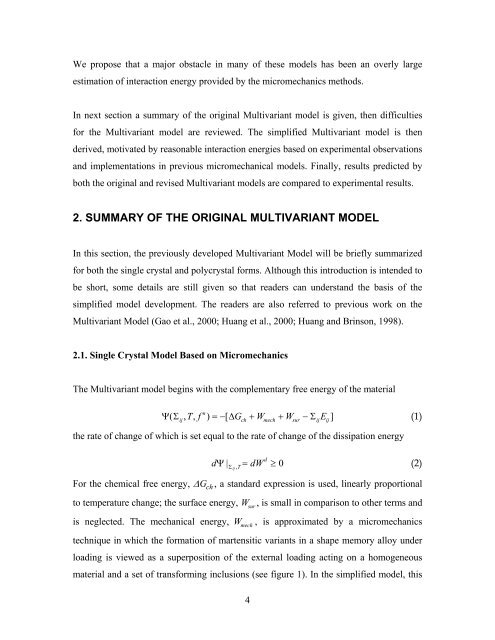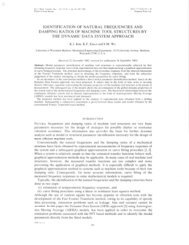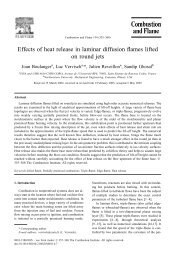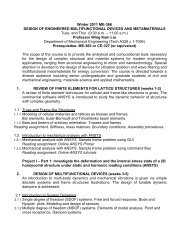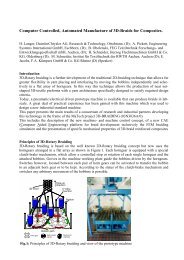A Simplified Multivariant SMA Model Based on Invariant Plane ...
A Simplified Multivariant SMA Model Based on Invariant Plane ...
A Simplified Multivariant SMA Model Based on Invariant Plane ...
You also want an ePaper? Increase the reach of your titles
YUMPU automatically turns print PDFs into web optimized ePapers that Google loves.
We propose that a major obstacle in many of these models has been an overly large<br />
estimati<strong>on</strong> of interacti<strong>on</strong> energy provided by the micromechanics methods.<br />
In next secti<strong>on</strong> a summary of the original <str<strong>on</strong>g>Multivariant</str<strong>on</strong>g> model is given, then difficulties<br />
for the <str<strong>on</strong>g>Multivariant</str<strong>on</strong>g> model are reviewed. The simplified <str<strong>on</strong>g>Multivariant</str<strong>on</strong>g> model is then<br />
derived, motivated by reas<strong>on</strong>able interacti<strong>on</strong> energies based <strong>on</strong> experimental observati<strong>on</strong>s<br />
and implementati<strong>on</strong>s in previous micromechanical models. Finally, results predicted by<br />
both the original and revised <str<strong>on</strong>g>Multivariant</str<strong>on</strong>g> models are compared to experimental results.<br />
2. SUMMARY OF THE ORIGINAL MULTIVARIANT MODEL<br />
In this secti<strong>on</strong>, the previously developed <str<strong>on</strong>g>Multivariant</str<strong>on</strong>g> <str<strong>on</strong>g>Model</str<strong>on</strong>g> will be briefly summarized<br />
for both the single crystal and polycrystal forms. Although this introducti<strong>on</strong> is intended to<br />
be short, some details are still given so that readers can understand the basis of the<br />
simplified model development. The readers are also referred to previous work <strong>on</strong> the<br />
<str<strong>on</strong>g>Multivariant</str<strong>on</strong>g> <str<strong>on</strong>g>Model</str<strong>on</strong>g> (Gao et al., 2000; Huang et al., 2000; Huang and Brins<strong>on</strong>, 1998).<br />
2.1. Single Crystal <str<strong>on</strong>g>Model</str<strong>on</strong>g> <str<strong>on</strong>g>Based</str<strong>on</strong>g> <strong>on</strong> Micromechanics<br />
The <str<strong>on</strong>g>Multivariant</str<strong>on</strong>g> model begins with the complementary free energy of the material<br />
n<br />
ΨΣ ( , T, f ) = − [ ∆G + W + W − Σ E ]<br />
(1)<br />
ij<br />
ch mech sur ij ij<br />
the rate of change of which is set equal to the rate of change of the dissipati<strong>on</strong> energy<br />
dΨ | Σ ij ,T = dW d ≥ 0 (2)<br />
For the chemical free energy, ∆G ch , a standard expressi<strong>on</strong> is used, linearly proporti<strong>on</strong>al<br />
to temperature change; the surface energy, W sur , is small in comparis<strong>on</strong> to other terms and<br />
is neglected. The mechanical energy, W mech , is approximated by a micromechanics<br />
technique in which the formati<strong>on</strong> of martensitic variants in a shape memory alloy under<br />
loading is viewed as a superpositi<strong>on</strong> of the external loading acting <strong>on</strong> a homogeneous<br />
material and a set of transforming inclusi<strong>on</strong>s (see figure 1). In the simplified model, this<br />
4


